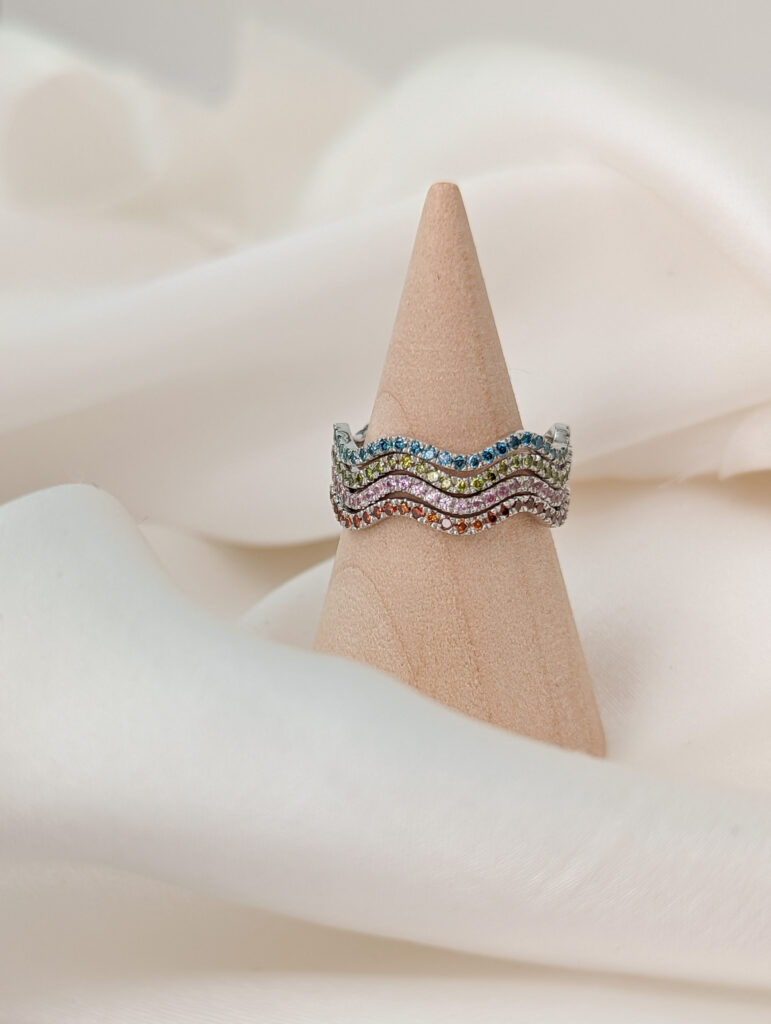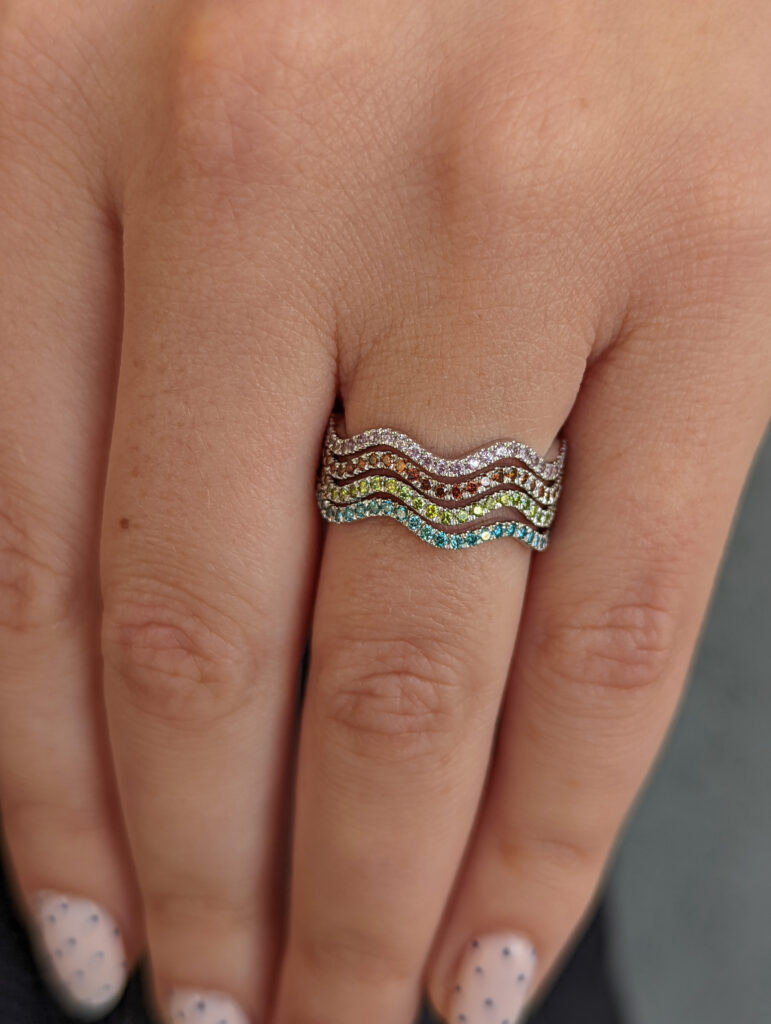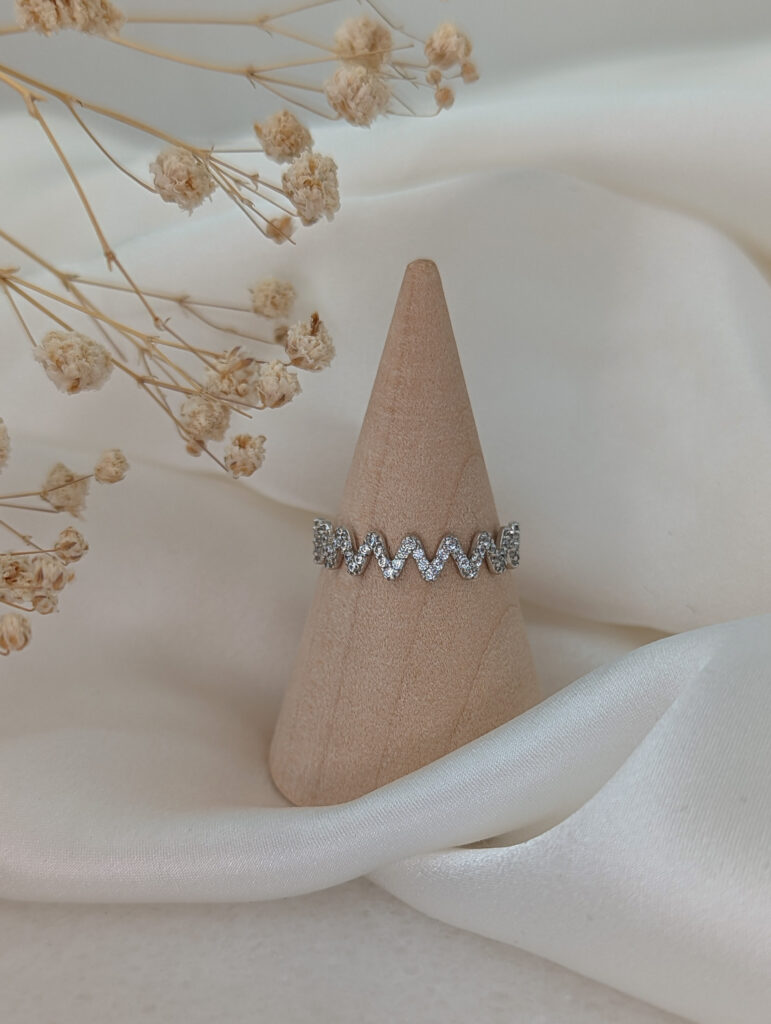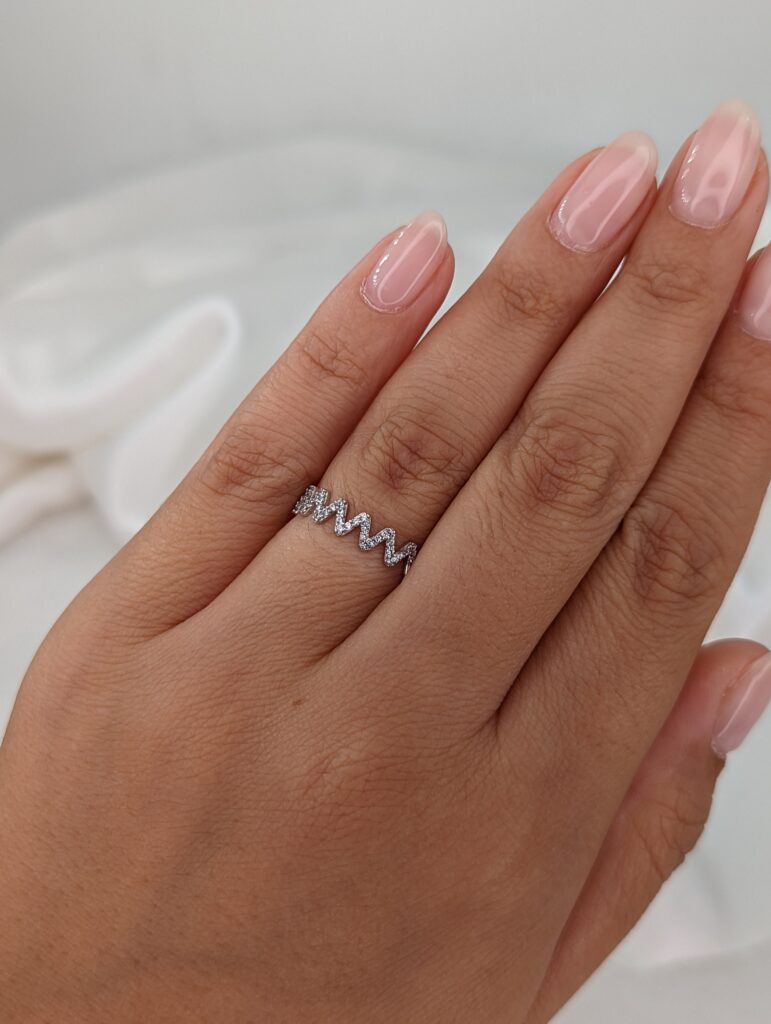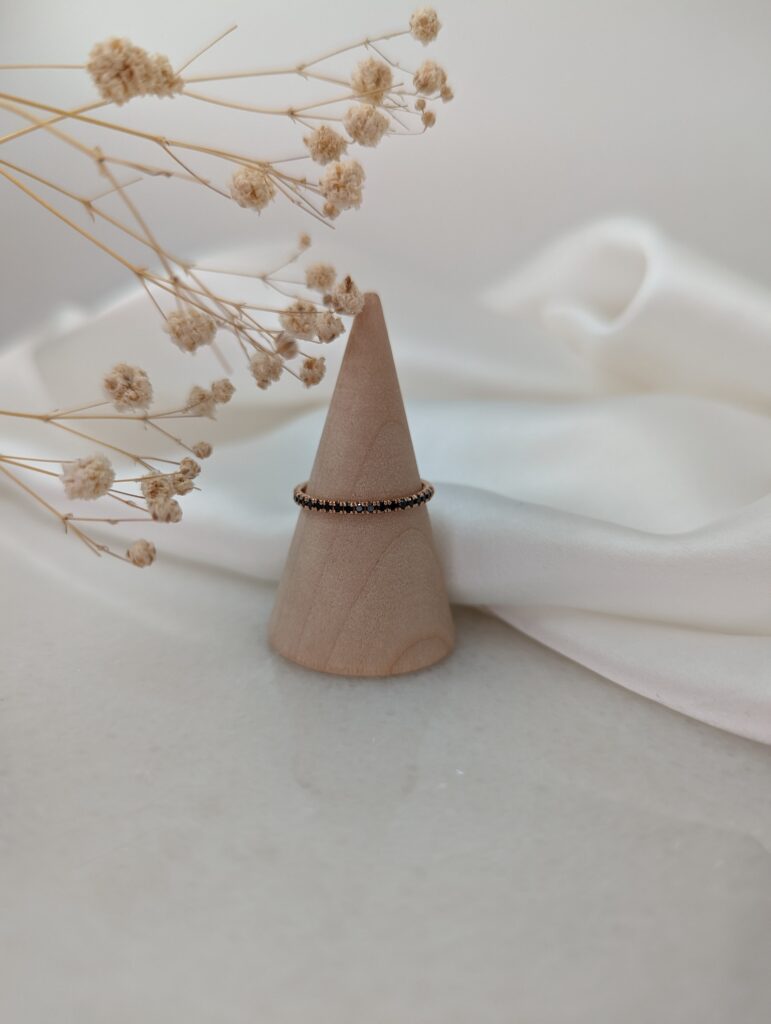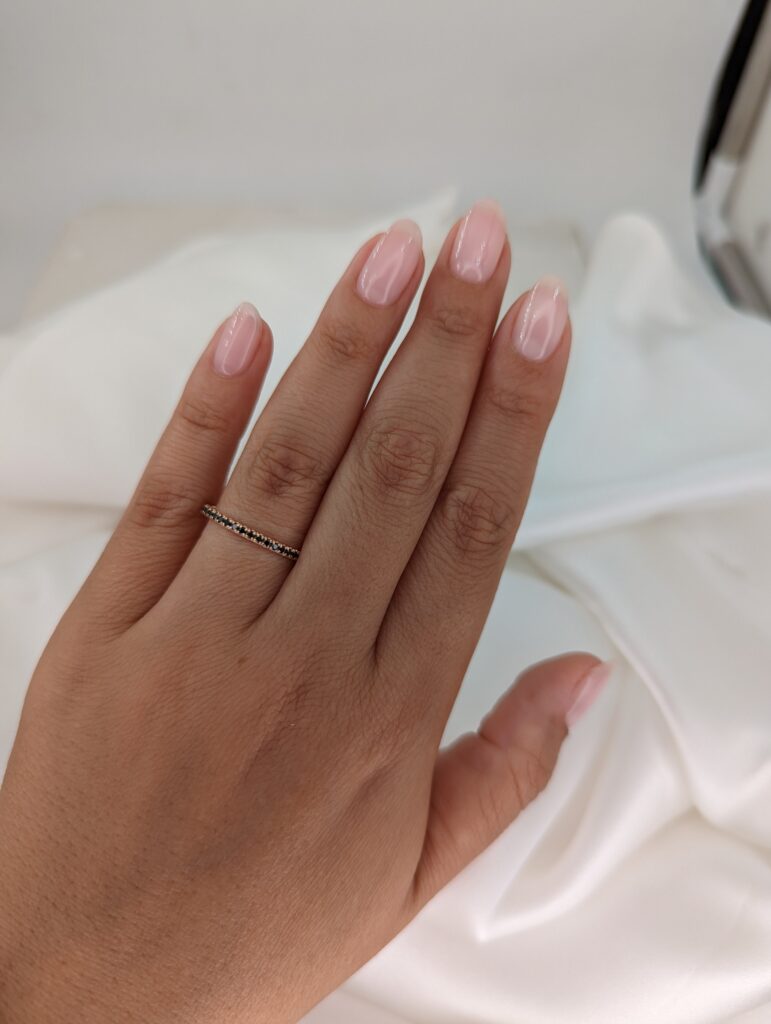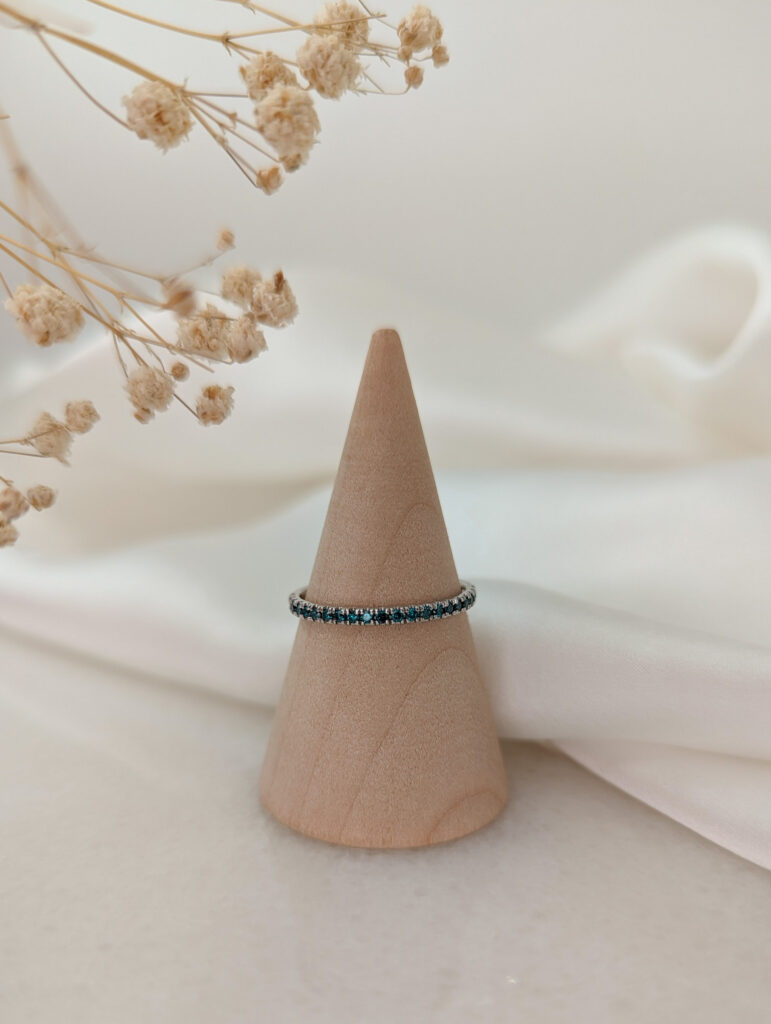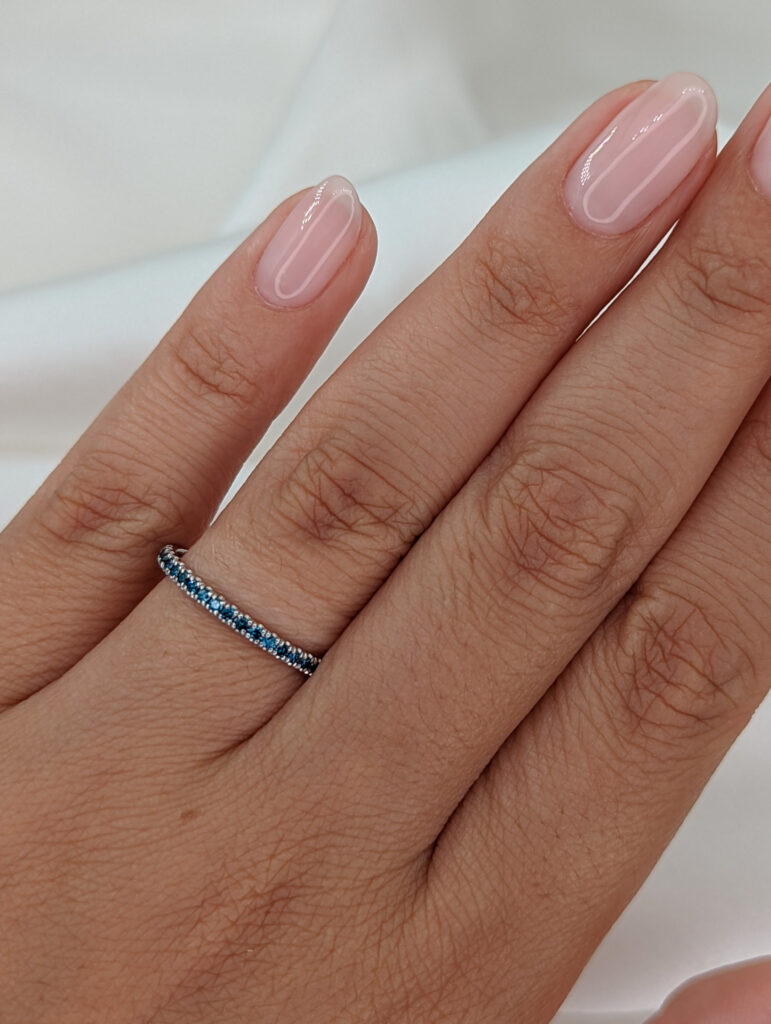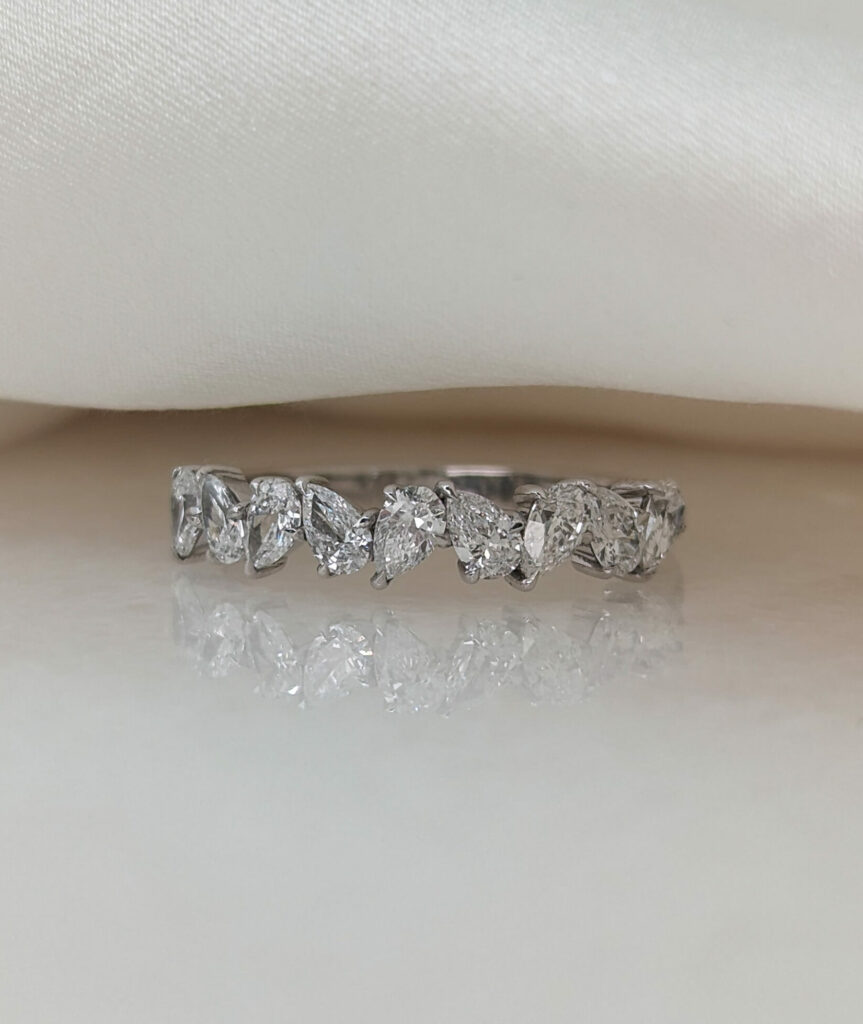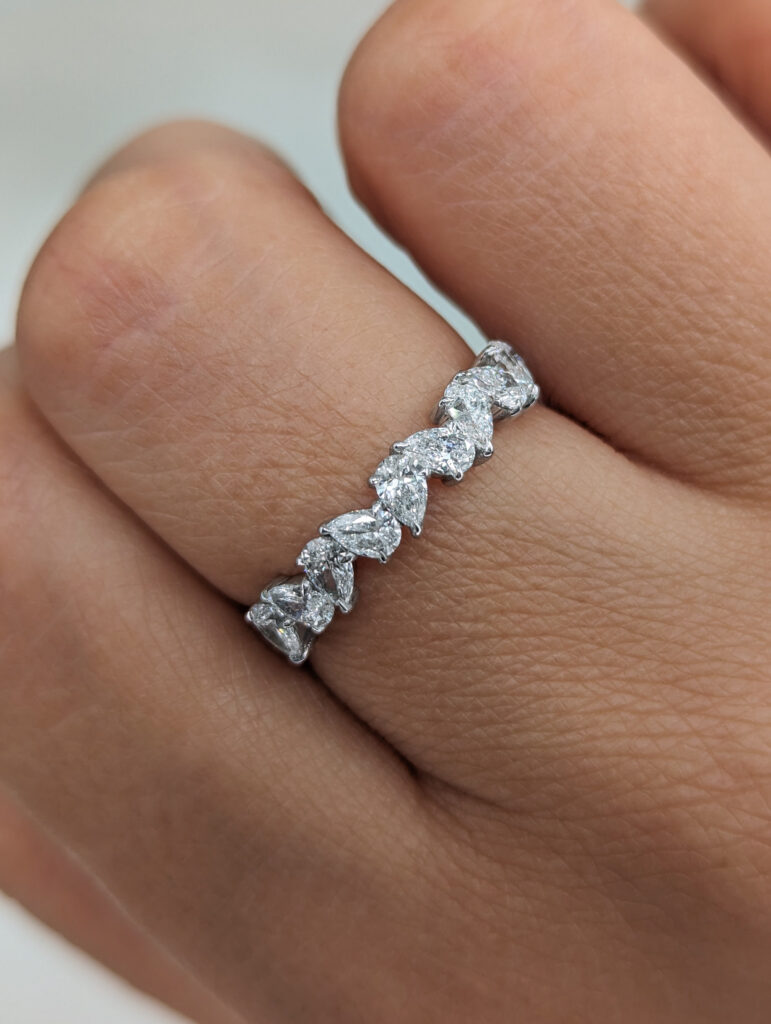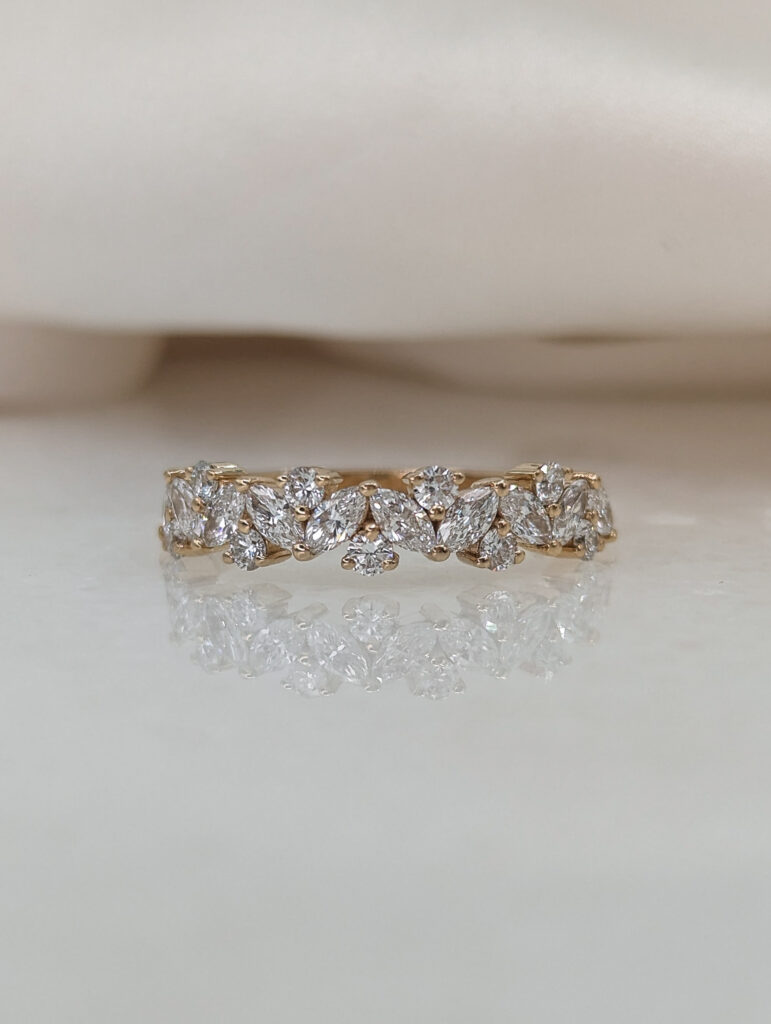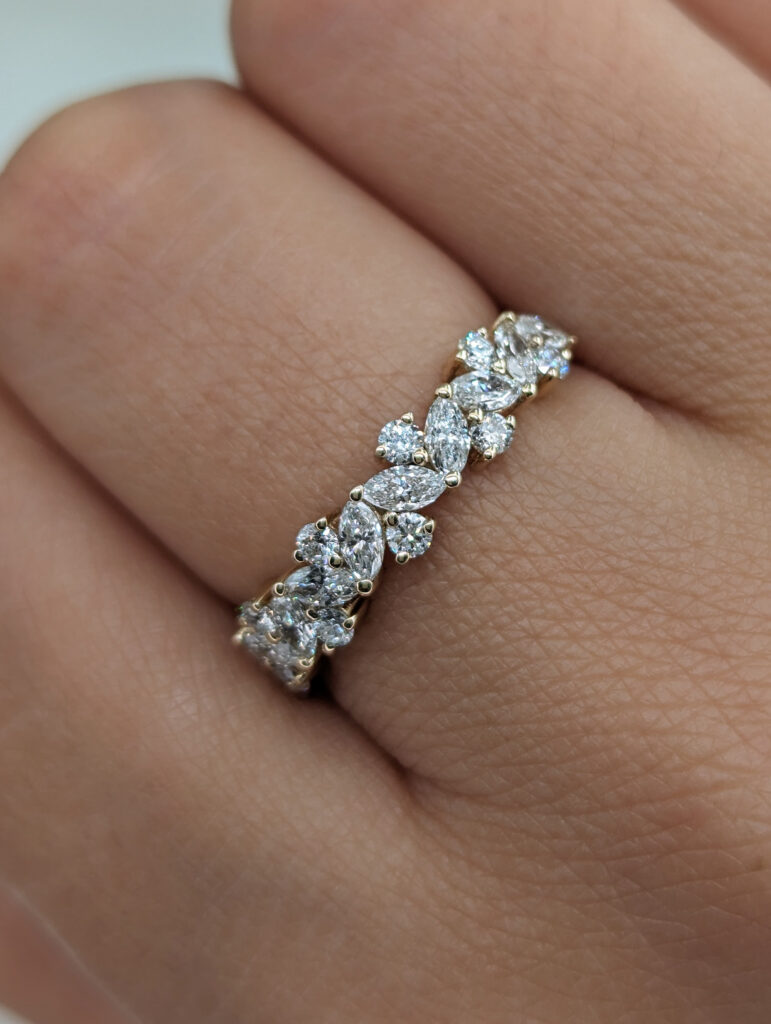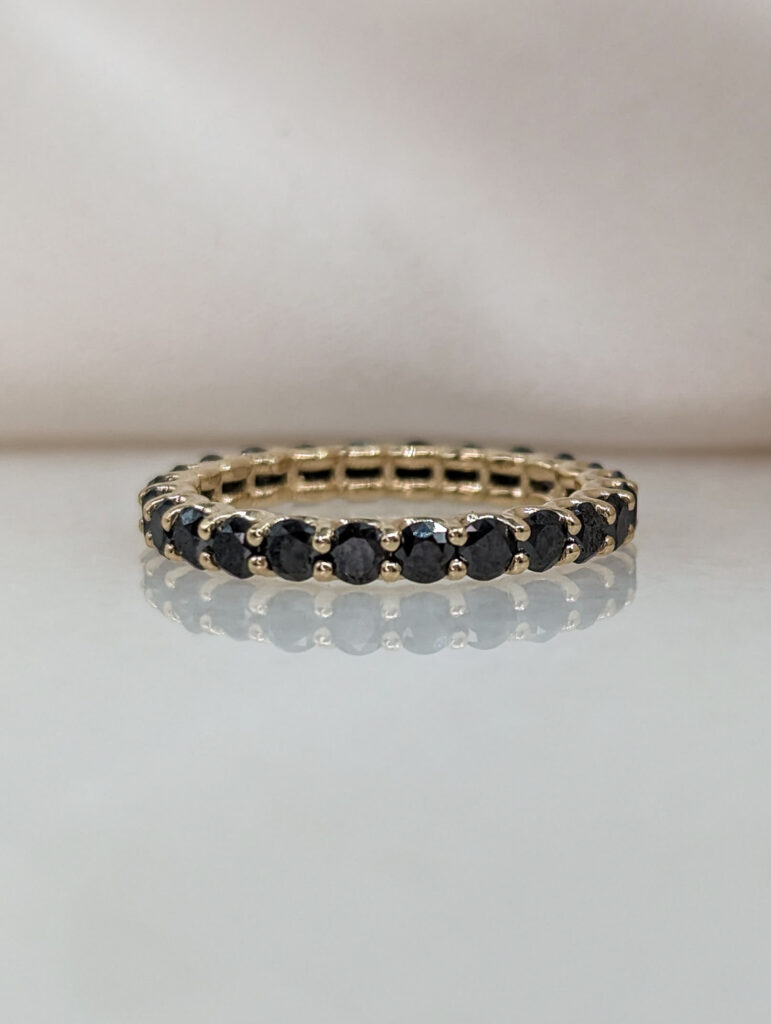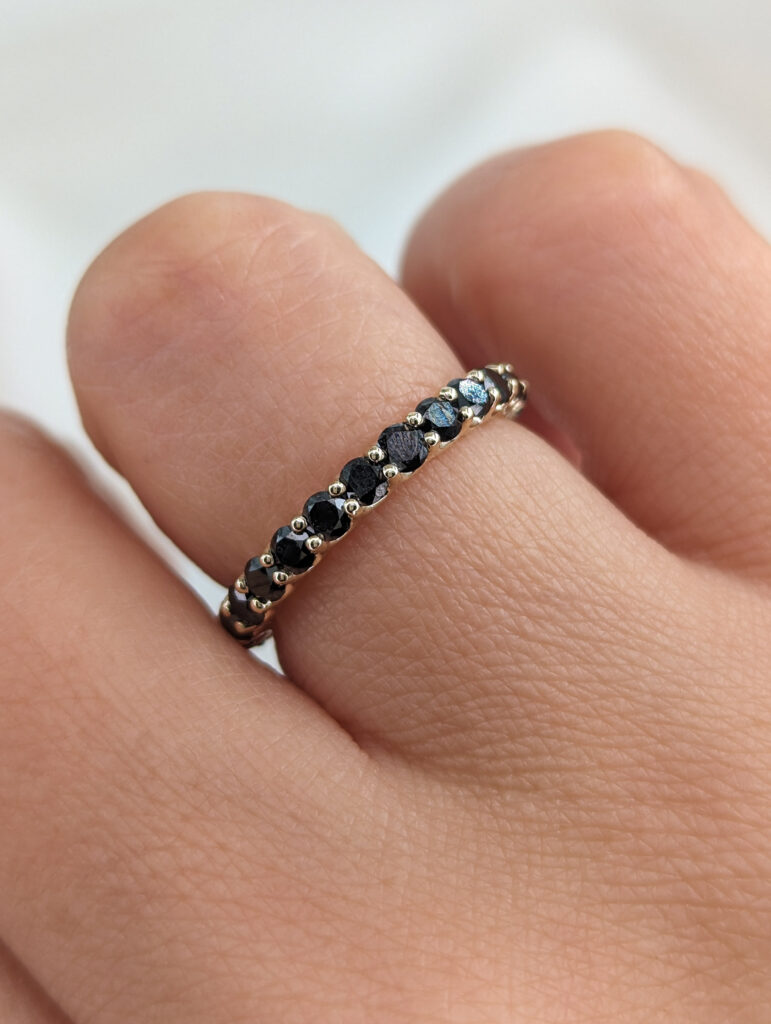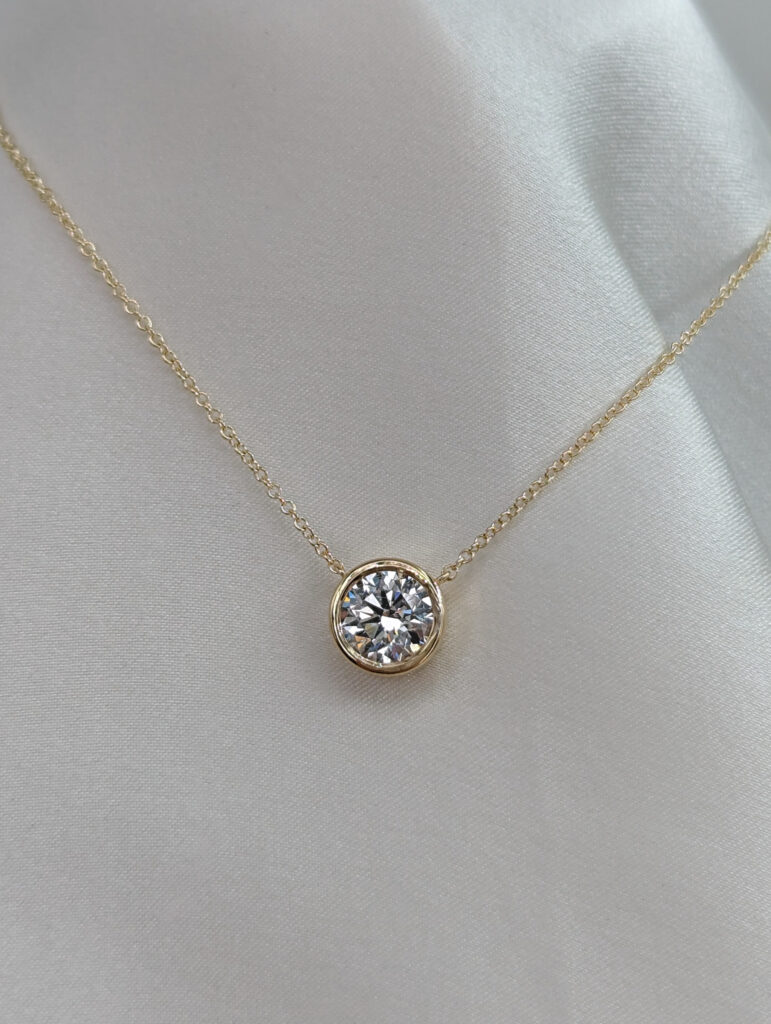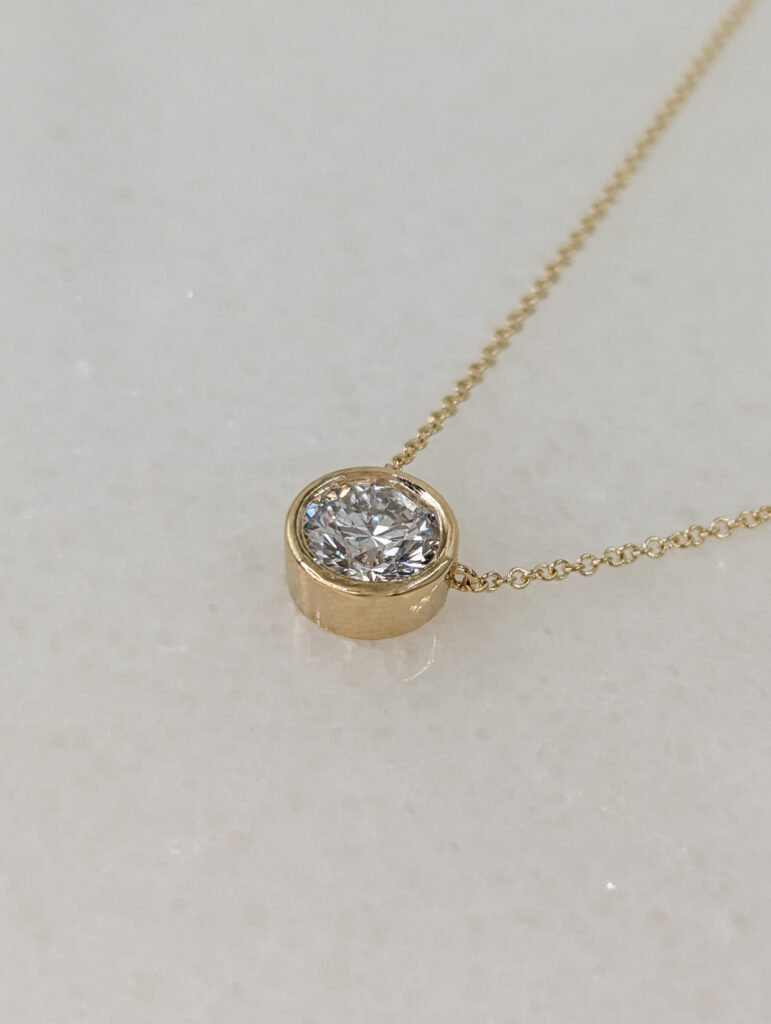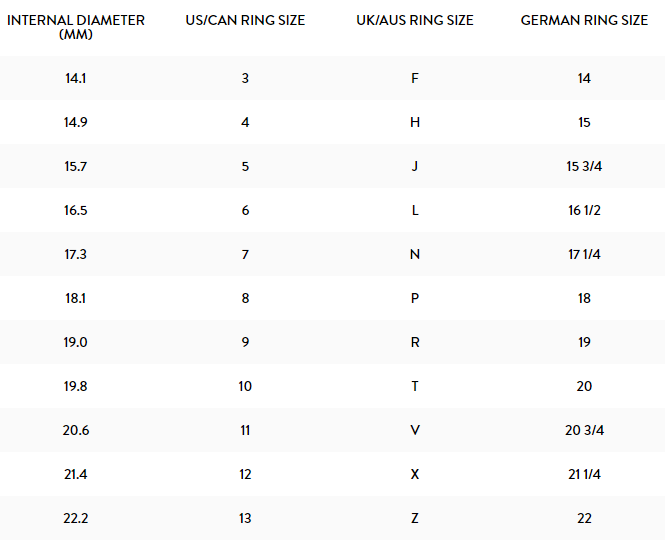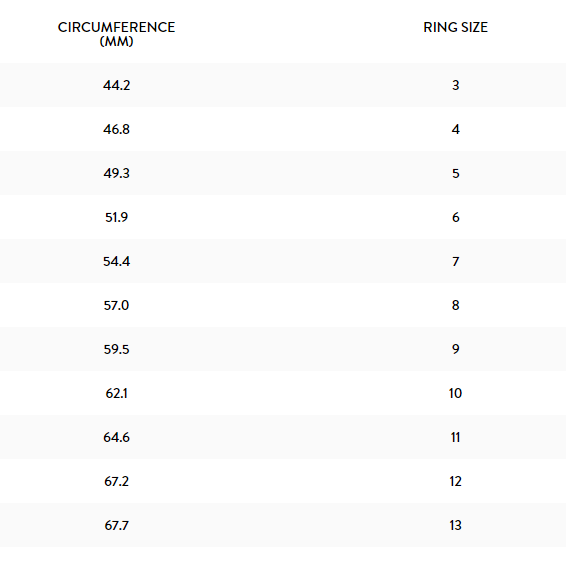Table of Contents
To the untrained eye, it may not be easy to tell the difference between a genuine and a simulated diamond. While it’s still best to have a gemologist check your diamond’s authenticity using sophisticated instruments, knowing a few tricks to recognize a non-genuine one wouldn’t hurt either. Having this knowledge can save you from being conned by disreputable sellers, brokers, or insurers.
When you don’t know how to differentiate between a real and simulated diamond, you might be duped to believe that copycats Cubic zirconia or moissanite are legit diamonds. Some may even trick you into thinking that your authentic diamond is fake or of less value.
In this article, we will list down various ways to test a diamond’s genuineness and cover topics like:
How can you tell a fake diamond?
How can you test if a diamond is real at home?
Will a fake diamond sink in water?
Are fake diamonds heavy?
Can fake diamonds scratch glass?
With this guide, you can arm yourself with the right knowledge so you don’t fall victim to counterfeiters.
Why Do You Need to Know How to Spot Fake Diamonds?
Caveat Emptor: Buyers Beware
When someone sells you a diamond, don’t let the gemstone’s luster lure you right away. As they say, looks can be deceiving. A stone that looks like a diamond doesn’t automatically mean it’s the real deal. Do your due diligence as a responsible buyer.
Diamonds are a big-ticket purchase, especially when it comes to purchasing an engagement ring, so there’s no room for being gullible. Don’t stop at just checking the diamond authenticity documents. Take extra steps to examine the stone closely before parting with your money.
Certifying Diamond Heirlooms
Do you have in your possession a diamond jewelry heirloom that has been passed down for generations in your family? Its original documents may have been lost somewhere down the line, but you may want to have it certified for its true value for insurance purposes.
In this article, we will also give you information on how diamond experts check a diamond’s authenticity, structure, inclusions, and other details.
Distinguishing Diamond Substitutes
There are many natural and synthetic stones or fabrications that are meant to be cheaper alternatives to diamonds. But of course, nothing beats the prestige and value of wearing real diamond jewelry. Putting your diamond aspirations on hold until you can already afford one and using an alternative for a while may do. Your diamond moment will come if you set your sights on it.
These alternatives ‘shine’ in their own way and may add a veneer of luxury without the heavy price tag. However, you need to manage your expectations because, since they are not real diamonds, they may look and feel inferior when worn. Understandably, these alternatives may fall short in the fire and brilliance department, as well as in intrinsic value and timelessness in terms of appeal and elegance.
While these stones do not necessarily mean a bad thing, being deceived to believe they are real diamonds is criminal. Aside from the already mentioned cubic zirconia and moissanite, other stones that simulate diamonds are:
- White zircon
- White spinel
- White topaz
- Glass
- Quartz
- White sapphire
Although some of these are more valuable than their counterparts, one thing remains certain: all of them differ from diamonds in composition, features, and worth.
Truth Matters: How to Tell if It’s a Real Diamond or Not
Although diamonds are popular for their superlative qualities as a gemstone, it’s not very easy to determine if a piece is genuine or not. This is why many people are ripped off by unscrupulous sellers who bank on their weaknesses for shiny things.
To make sure you won’t be included in the list of victims, here are some expert-approved ways to check a diamond’s credibility using simple methods and materials. Note that we are excluding the scratch test here because even fake diamonds can scratch glass.

DIY Diamonds Tests You Can Do at Home
How can you test if a diamond is real at home? Here are a few non-rocket science ways.
The Water Test
Grab a glass and fill ¾ of it with water. Slowly drop a loose diamond to the water. A real diamond will sink to the bottom while a fake one will float on the water surface or underneath. Why? Because real diamonds are dense and the physics law applies.
So to the question, “Will a fake diamond sink in water?” The answer is NO. A faux diamond will float. It will not sink. This is an easy and accurate test, thanks to the diamond’s high density level that can be easily tested in water.
The Fog Test
You can apply this test on both loose diamonds and diamond jewelry. Remember when as a kid you used to puff on a car window and write something on it? It’s the same thing with this test.
Simply hold your loose diamond or your diamond jewelry between your fingers and blow on it. Observe how the stone in your hand reacts. A real diamond dissipates fog quickly while it takes longer for the fog to disappear on the surface of a fake one.
The science behind this is that diamonds are good heat conductors. As such, they dissipate the heat in your breath quickly.
The Heat Test
Being natural conductors, diamonds are strong materials that have high heat tolerance. You can test if a diamond-looking stone is actually a real diamond by subjecting it to extreme temperatures.
Prepare a glass of ice-cold water, pliers or heat-resistant gloves, and a lighter. Hold the diamond up and heat it with fire for about 40 to 50 seconds. Then, drop it into a glass of cold water. A real diamond will show no reaction and simply sink while a poser will be fractured or may shatter.
The expansion and contraction of the stone caused by the extreme heat and cold will cause fake stones and weaker materials like glass or zirconia to crack. On the contrary, a real diamond will not bend, bulge, or break when exposed to extreme temperature changes.
The Setting or Mount Test
This is not really a test but more of an intelligent guess. Diamonds are of high value and so it only makes sense to have it set in authentic metals like gold, silver, or platinum. It would be quite illogical to set a precious stone on cheap material as it would diminish the jewelry’s overall prestige and value.
Check the setting or mount and have a close look at the inside of the ring. Markings like 10K, 14K, 18K, or 24K indicates the type of gold used. Meanwhile, PT means platinum. Three-digit numbers indicate gold or platinum, while a C.Z. mark means a cubic zirconia is used, a diamond substitute.
The Weight Test
You can do this test if you are comparing two loose stones of exactly the same size and shape. Cubic zirconia weighs more than a diamond by around 50% while a moissanite is lighter by 15%.
This method is not recommended if there are even slight variations because it could affect the accuracy of the result.
The Light Refraction Test
A diamond’s brilliance is the result of its ability to refract light or change its direction when it hits an angle. The lower half of the ring has angled surfaces and when light hits it, the light gets refracted then bounces up through the top of the diamond. The bent light causes it to split to different colors, which is what we call fire.
Because light that travels through a diamond bends, looking through the diamond would make anything inside it look blurry.
You can do this test using two different methods:
Read-Through Method
You can use a magazine page, newspaper, or book that has small printed letterings. In a well-lit room, place the loose diamond flat side down. Make sure that no shadow is cast on it and the room is completely and evenly lighted.
If you can still read the letter or letters even with a bit of blur, the diamond is fake. If you can’t make out the printed letters, it means light is refracted because the stone is a real diamond.
Dot Method
Another way to do this test is through the dot method. You simply need a white paper and a pen.
Here’s how to do this: Place the paper on a flat surface. Draw a dot on the paper. Flat side down, lay the stone on the dot. Look down on the paper through the stone’s pointed tip. If you see the dot or a reflection of it inside the stone, it means the stone isn’t a diamond. If no dot or circular reflection appears, it’s a real one.
Both of these methods apply the principle of the diamond’s light-refracting feature and how light bounces off its angles in varied directions instead of a straight line.
The Light Reflection Test
Reflection is the light reflected off a stone. A diamond’s facets emanate fire and brilliance or sparkle because of its reflective nature. In this test, you will check how the stone sparkles to see if it’s real or not.
With your bare hands, hold the diamond under anything that emits light like a lamp. Notice how the stone sparkles. Does it reflect white light? Does it also reflect colored light? A diamond has both brilliance and fire. It unapologetically sparkles and exhibits both under light.
If the stone lacks in these departments, then it’s not a genuine diamond to begin with.
How Diamond Experts Check a Diamond’s Authenticity
As mentioned, you can turn to gemology experts who know diamonds like the back of their hands and who can precisely tell which is real or not with the help of some tools. Here are the common ways diamond masters do it:
By Checking Its Details Under a Loupe
A loupe is a magnification device used to examine the minute details of stones like diamonds. The loupe shows internal and external inclusions and flaws not visible to the naked eye. Note that no real natural diamond is completely pure except those fabricated to look pure and are therefore fake.
By Using a Diamond Tester
This device works by examining the thermal conductivity of the stone. Real diamonds disperse heat quickly after being subjected to heat while fake ones do it at a slower rate.
However, this test is not reliable when it comes to moissanite stones because they have a similar heat dispersing rate as real diamonds. For this reason, testing synthetic moissanite is trickier and it could pass for a diamond if not tested in multiple ways.
By Using an Electricity Conductivity Tester
This method is more reliable even with moissanite stones. Real diamonds conduct electricity better than diamond substitutes. This technique can accurately tell a real diamond and a fake diamond apart.
By Using an X-Ray Equipment
Diamond testing laboratories have X-ray machines that examine the molecular attributes of a stone. Real diamonds have a radiolucent molecular structure while quartz and cubic zirconia have radiopaque molecular features.
Conclusion
While there are stones that simulate the looks of a diamond, a real diamond’s desirability is beyond question. Having an assurance that what you have on your hand is the real deal is important. It validates its value and timelessness.
A dazzling dream come true, buying diamond jewelry is considered a milestone purchase meant to celebrate occasions, feelings, and aspirations. Carefully choosing the real and right one adds to the joy of the experience.
So, don’t hesitate to check if a stone is real or not whether on your own or with the help of a diamond expert. When it comes to diamonds and everything else in life that’s precious, beauty is found in authenticity.
Why Buy At Othergems.com?
Authority and authenticity.
Othergems.com is known for its expertise in all things diamond and its ingenuity in crafting rough diamonds into classic or avant-garde jewelry pieces.
We offer a medley of stunning jewels and our diamonds are globally recognized as top-tier in terms of craftsmanship and character. From diamond engagement rings to wedding bands and pendants and earrings, our family of seasoned jewelers create high-grade diamonds and settings worthy of the red carpet. We can create engagement rings of any diamond cut, carat, color, or clarity of your choice for that bespoke sparkler experience.
Find the one that’s right for you because you deserve nothing less.


